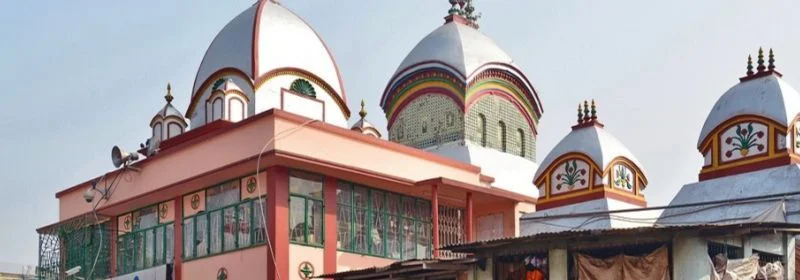Kalighat Temple in Kolkata, West Bengal, is one of the most sacred shrines dedicated to Maa Kali, the powerful goddess of destruction and creation. Revered as one of the 51 Shakti Peethas, it holds immense spiritual significance in Hinduism. Devotees from across India and the world visit this temple seeking blessings, protection, and spiritual fulfillment.
The temple is believed to be the site where the right toe of Maa Sati fell, making it a powerful center of Shakti worship. Kalighat is not only a religious landmark but also a symbol of Bengal’s spiritual heritage, cultural richness, and deep devotion.
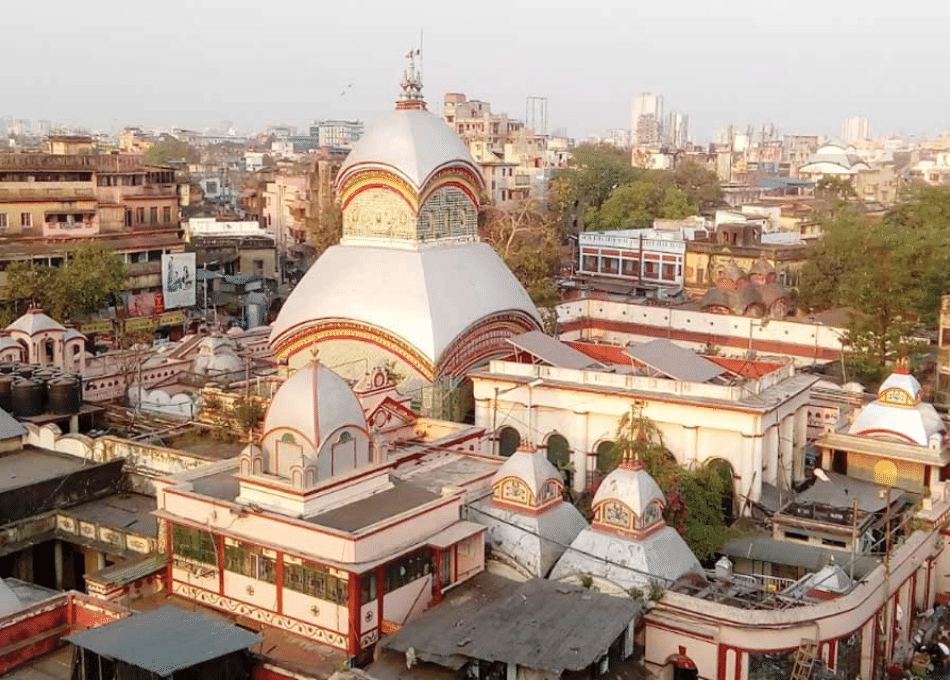
Historical and Mythological Background
Kalighat has a long and fascinating history intertwined with mythological tales. According to legend, after Maa Sati’s self-immolation, Lord Shiva wandered the earth carrying her body. Wherever parts of her body fell, sacred Shakti Peethas were established. The site in Kalighat is associated with her right toe, making it a revered place of worship.
Historically, the temple has existed for centuries, with records indicating small shrines in the area before the current structure was built in the 19th century. It gained prominence as a center for Tantric practices and rituals, attracting devotees who sought the goddess’s blessings through both traditional and Tantric worship methods. Over time, the temple became a focal point of devotion, culture, and community gatherings.
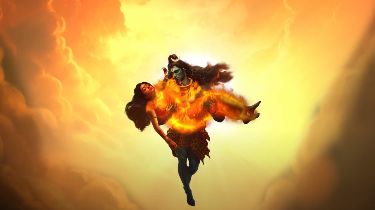
Spiritual Significance
Kalighat Temple is considered a potent spiritual hub due to several factors. Firstly, as a Shakti Peetha, it represents the presence of divine feminine energy. Devotees believe that worshipping here removes obstacles, offers protection, and fulfills sincere wishes. Secondly, the temple’s association with Tantra has made it a place where spiritual practitioners come to harness divine energy and seek spiritual awakening.
The goddess in Kalighat is worshipped in her fierce form, symbolizing the destruction of negativity and protection of righteousness. Devotees often recount experiences of inner strength and spiritual clarity after visiting the temple. The rituals performed at Kalighat, especially during festivals, amplify this energy, creating a deeply moving spiritual experience.
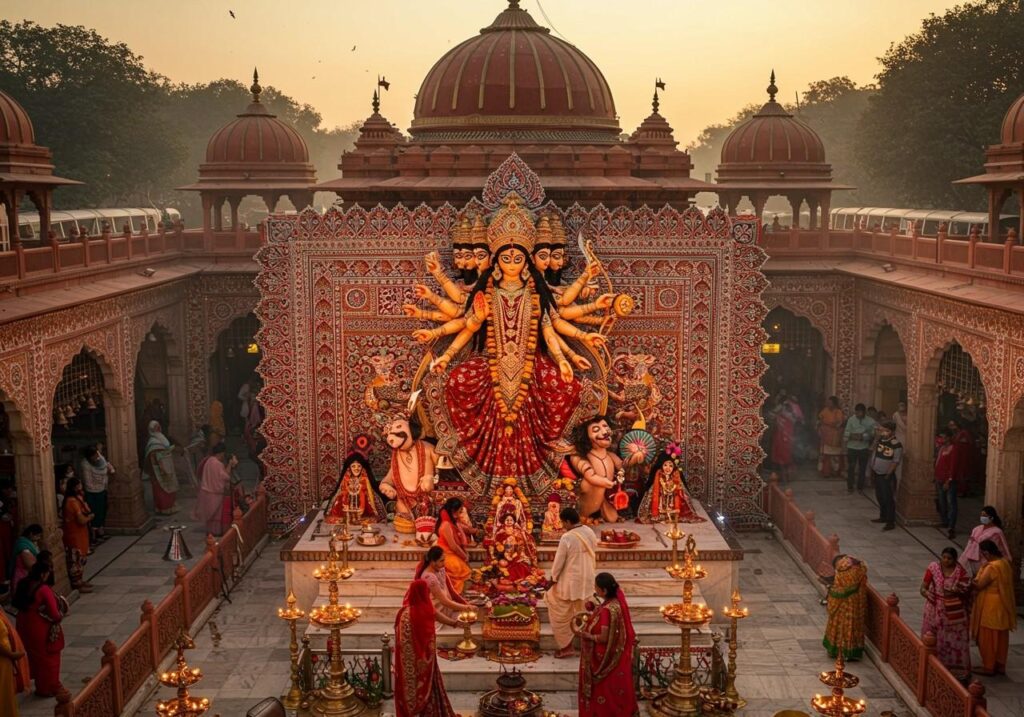
Architecture and Layout
Kalighat Temple’s architecture is modest yet powerful. The main sanctum houses a small but striking idol of Maa Kali, depicted with four arms holding a sword and a severed head, while blessing her devotees with one hand. The simplicity of the structure emphasizes spiritual focus over grandeur.
The temple complex includes a spacious courtyard for devotees to gather, perform rituals, and make offerings. Smaller shrines surrounding the main temple are dedicated to deities such as Lord Shiva, Hanuman, and other forms of the goddess. This layout allows devotees to engage with multiple aspects of divine energy during their visit.
Festivals at Kalighat Temple
Kalighat Temple is a center of vibrant festivals and rituals that attract thousands of devotees every year.
Kali Puja
Kali Puja, celebrated in October or November, coincides with Diwali. During this festival, the temple is decorated elaborately with lights and flowers. Devotees offer sweets, red hibiscus flowers, and coconuts to the goddess. Special rituals are performed to invoke Maa Kali’s blessings for protection and prosperity.
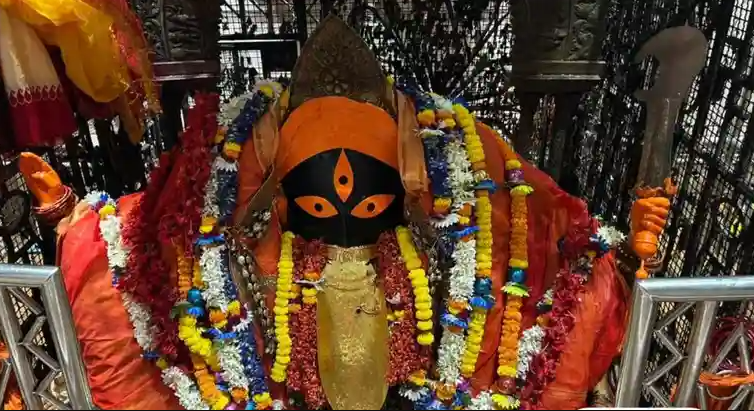
Durga Puja
Although primarily dedicated to Goddess Durga, Durga Puja celebrations at Kalighat involve special prayers to Maa Kali. The temple becomes a hub of cultural activities, music, and devotional singing during this period.
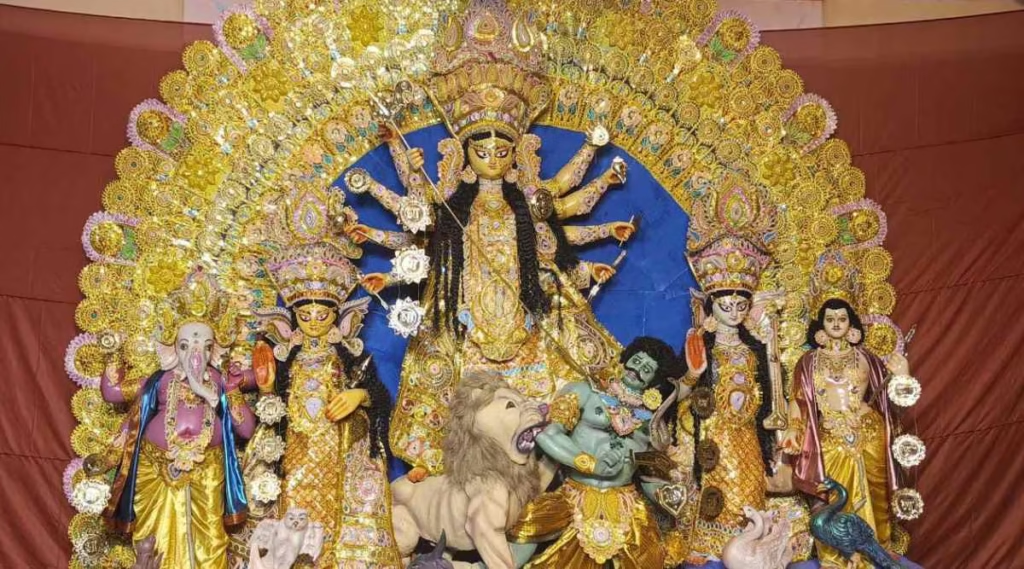
Tantric Rituals
Historically, Kalighat has been associated with Tantric practices. Certain festivals and rituals involve worship that highlights the goddess’s power, energy, and protective qualities. While modern worship is more mainstream, these practices continue to add a unique spiritual dimension to the temple.
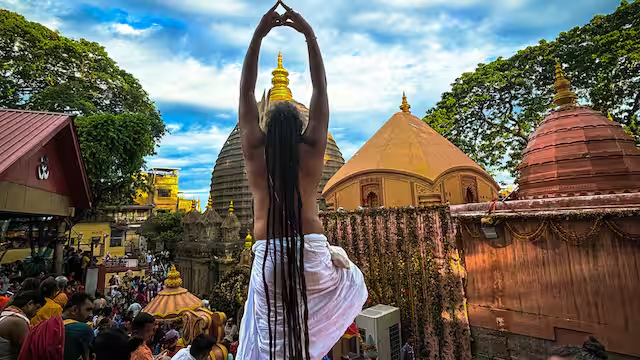
Rituals and Devotion
Devotees at Kalighat follow traditional rituals to seek blessings from Maa Kali. Common offerings include red flowers, sweets, coconuts, and incense. In earlier times, animal sacrifices, especially of goats, were performed, though such practices are now regulated.
Daily aarti, performed in the early morning and evening, is a key ritual that attracts large numbers of devotees. The chants, music, and devotion during aarti create an atmosphere charged with spiritual energy, offering an unforgettable experience to visitors.
The temple’s blend of traditional Hindu and Tantric rituals makes worship at Kalighat unique. Devotees experience a sense of both reverence and spiritual awakening while participating in the rituals.
Visiting Kalighat Temple
Kalighat is located in South Kolkata, near the Kalighat metro station, making it easily accessible from anywhere in the city.
How to Reach
- By Metro: Kalighat metro station is within walking distance.
- By Road: Regular buses, taxis, and auto-rickshaws connect the temple to different parts of Kolkata.
- By Train: The nearest railway station is Majerhat, about 2 kilometers from the temple.
Timings
- Open: 5:00 AM
- Close: 10:00 PM
Tips for Visitors
- Visit early in the morning to avoid crowds, especially during festivals.
- Dress modestly and respectfully, as the temple follows traditional customs.
- Photography inside the sanctum is not allowed.
- Consider hiring a local guide to understand the temple’s history, myths, and rituals better.
FAQs for Kalighat Temple
1. Why is Kalighat Temple famous?
Kalighat Temple is one of the 51 Shakti Peethas, dedicated to Goddess Kali, attracting thousands of devotees annually.
2. Where is Kalighat Temple located?
It is situated in Kolkata, West Bengal, on the banks of the Adi Ganga.
3. What is worshipped at Kalighat Temple?
The temple worships Goddess Kali, believed to represent the power of Shakti and destroyer of evil.
4. What are the temple timings?
The temple generally opens from 6:00 AM to 12:00 PM and 4:00 PM to 9:00 PM.
5. Is photography allowed inside Kalighat Temple?
Photography is strictly prohibited inside the temple premises.
6. What is the significance of Kalighat as a Shakti Peetha?
It is believed that the fingers of Goddess Sati’s right foot fell here, making it a sacred site of feminine energy.
7. How can I reach Kalighat Temple?
It is easily accessible by Kolkata Metro, buses, taxis, or auto-rickshaws from any part of the city.
8. Are there any festivals celebrated at Kalighat Temple?
Yes, Kali Puja and Diwali are major festivals, attracting huge crowds of devotees.
9. Is there accommodation nearby for pilgrims?
Yes, there are guesthouses, hotels, and lodges within walking distance or a short drive.
10. Can senior citizens visit Kalighat Temple easily?
Yes, the temple has accessible entrances, but during festivals, crowds can be heavy, so early visits are recommended.

